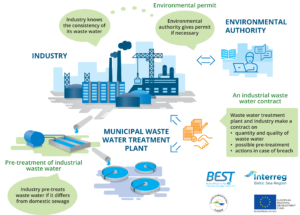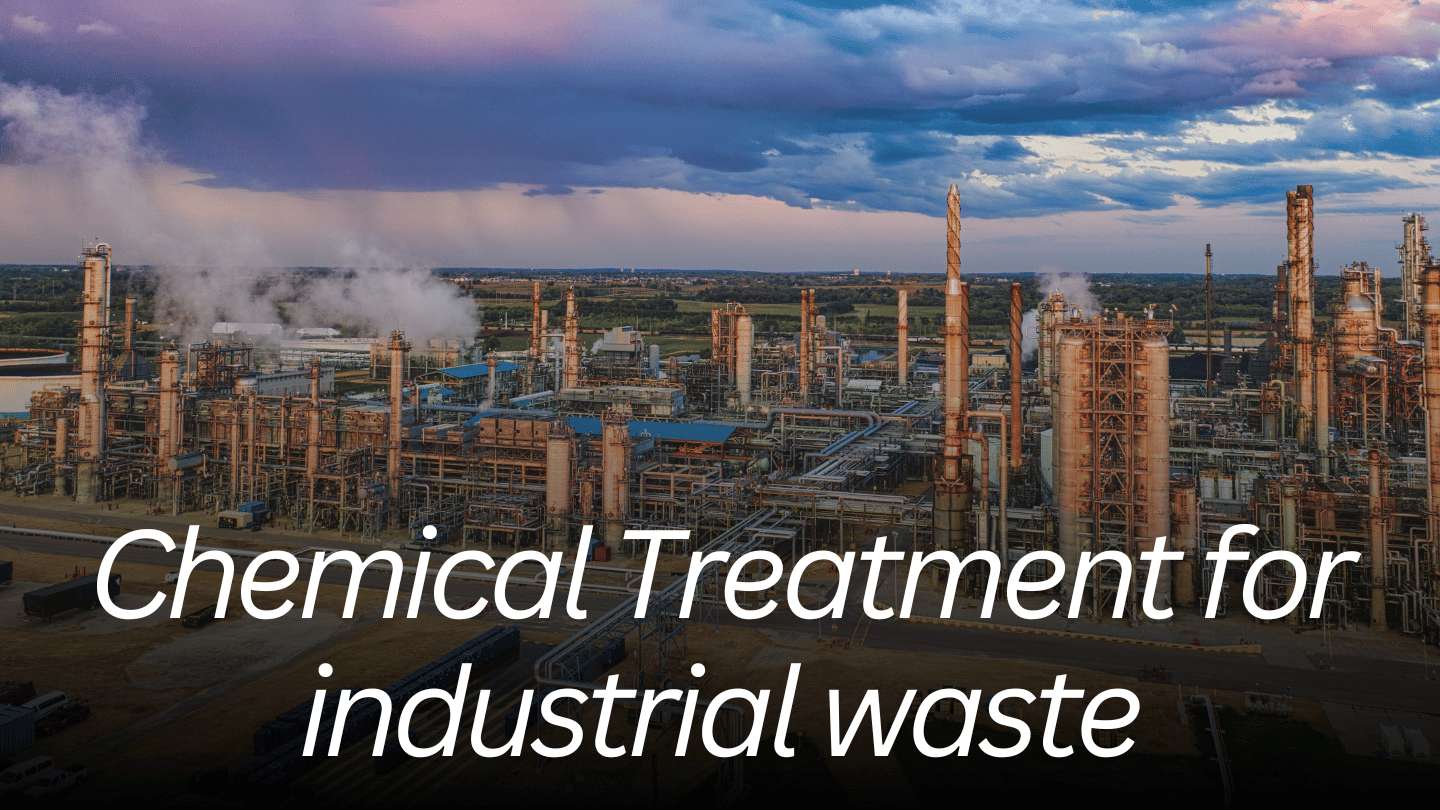Industrial Waste Water Treatment-- Comprehensive Solutions for Wastewater Disposal
Industrial Waste Water Treatment-- Comprehensive Solutions for Wastewater Disposal
Blog Article
Key Methods in Hazardous Waste Water Therapy Processes
The treatment of commercial wastewater is a critical aspect of environmental administration, including an array of strategies designed to reduce the effect of impurities. Innovations in modern technologies such as membrane filtration and advanced oxidation processes provide ingenious options for boosting therapy efficiency.
Physical Therapy Approaches
Just how successfully can physical therapy techniques attend to the intricacies of commercial wastewater? Physical treatment techniques play a critical role in the preliminary stages of wastewater monitoring, concentrating largely on the elimination of solids and big particulates. Strategies such as sedimentation, flotation protection, and filtering are crucial for lowering the focus of suspended solids, thereby enhancing the performance of succeeding treatment procedures.
Sedimentation includes the gravitational settling of solids, allowing for the splitting up of heavier products from the wastewater. This technique is specifically efficient in clarifying water prior to chemical or biological treatments.
In addition, flotation approaches, which use air bubbles to raise suspended solids to the surface area for elimination, are efficient in dealing with wastewater with high concentrations of fats, oils, and oils. Overall, physical therapy methods function as a critical very first step in the extensive monitoring of industrial wastewater, making sure that the load on subsequent therapy stages is reduced and boosting overall treatment efficiency.
Chemical Treatment Techniques
While physical therapy approaches prepared for reliable wastewater administration, chemical treatment strategies are necessary for dealing with the extra complicated pollutants often located in industrial effluents. These techniques utilize numerous chemical agents to precipitate, counteract, or oxidize damaging substances, making sure a more complete removal of pollutants.
One typical approach is coagulation and flocculation, where chemical coagulants such as aluminum sulfate or ferric chloride are included in promote the gathering of suspended bits. This procedure enhances solid-liquid splitting up, reducing turbidity and enhancing water top quality. Furthermore, neutralization procedures are used to adjust the pH of wastewater, utilizing bases or acids to neutralize acidic or alkaline streams, respectively.
Oxidation-reduction responses play a crucial function in derogatory natural contaminants and microorganisms. Chemical oxidants like hydrogen, ozone, or chlorine peroxide are utilized to break down complicated natural substances, making them much less harmful or much more naturally degradable. Furthermore, advanced oxidation processes (AOPs) integrate several oxidation methods to boost toxin elimination performance.
Biological Therapy Procedures
The performance of wastewater therapy is dramatically boosted by organic therapy procedures, which harness the all-natural metabolic activities of bacteria to break down organic matter and remove toxins. Industrial Waste Water Treatment. These procedures largely entail cardiovascular and anaerobic digestion, each tailored for details sorts of wastewater
Cardiovascular treatment processes utilize oxygen to sustain microbial development, promoting the break down of natural toxins right into carbon dioxide and water. Typical techniques include triggered sludge systems, where aeration tanks facilitate the mixing of wastewater with bacteria, and trickling filters, which motivate biofilm development on media surfaces.
On the other hand, anaerobic treatment processes occur in the lack of oxygen, making use of anaerobic germs to decay raw material, resulting in biogas manufacturing, a renewable resource source. Anaerobic digesters are usually used in commercial settings for this objective, successfully decreasing the quantity of sludge while producing valuable biogas.
The option of a biological therapy technique relies on wastewater attributes, treatment goals, and governing requirements. The assimilation of biological procedures in wastewater treatment not just enhances toxin removal effectiveness but likewise advertises sustainability by reducing chemical use and supporting resource recuperation.
Advanced Oxidation Processes

Typical AOP strategies include Fenton's reagent, ozonation, and photocatalysis. Fenton's reagent, a combination of hydrogen peroxide and ferrous iron, militarizes the development of hydroxyl radicals, making it effective for treating wastewater consisting of phenolic substances and various other recalcitrant Discover More Here compounds.
AOPs use numerous benefits, including decreased sludge manufacturing and the capacity to deal with wastewater with high focus of organic pollutants. The application of AOPs needs cautious factor to consider of functional criteria and cost-effectiveness, making certain that these advanced techniques are appropriately integrated into existing wastewater treatment systems.
Membrane Filtration Technologies

Microfiltration is reliable for removing suspended germs and solids, while ultrafiltration targets smaller sized natural particles and viruses. Nanofiltration connects the void in between ultrafiltration and turn around osmosis, properly removing organic compounds and divalent ions. Reverse osmosis offers the greatest degree of filtration, utilized mostly for desalination and getting rid of mono-valent ions.
Membrane layer modern technologies supply numerous benefits, consisting of reduced power intake contrasted to typical therapy approaches, modular layout for scalability, and the possibility for water recuperation and reuse. Challenges such as membrane layer fouling and the requirement for routine maintenance must be addressed to ensure system efficiency. On the whole, membrane filtration technologies stand for an essential element of contemporary commercial wastewater therapy methods, promoting sustainability and resource preservation in water monitoring.
Final Thought
To conclude, industrial wastewater therapy utilizes a varied variety of methods, including physical, chemical, organic, and advanced approaches. Each technique plays an important role in properly resolving different contaminants, improving water quality, and advertising resource sustainability. The assimilation of these methods fosters a comprehensive therapy strategy, making certain that industrial effluents fulfill regulative criteria while reducing ecological effect. Proceeded developments in these techniques will better enhance the performance and effectiveness of wastewater therapy procedures in industrial setups.
The treatment of industrial wastewater is a crucial element of ecological monitoring, entailing a range of strategies designed to reduce the effect of impurities.How successfully can physical therapy approaches address the complexities of industrial wastewater?Advanced oxidation processes (AOPs) visit this site stand for a sophisticated approach in industrial wastewater treatment, developed to successfully weaken natural toxins that are frequently resistant to conventional treatment techniques (Industrial Waste Water Treatment).In final thought, industrial wastewater treatment utilizes a diverse range of methods, including physical, chemical, biological, and advanced methods. Continued advancements in these methodologies will further boost the performance and performance of wastewater therapy procedures in commercial settings
Report this page